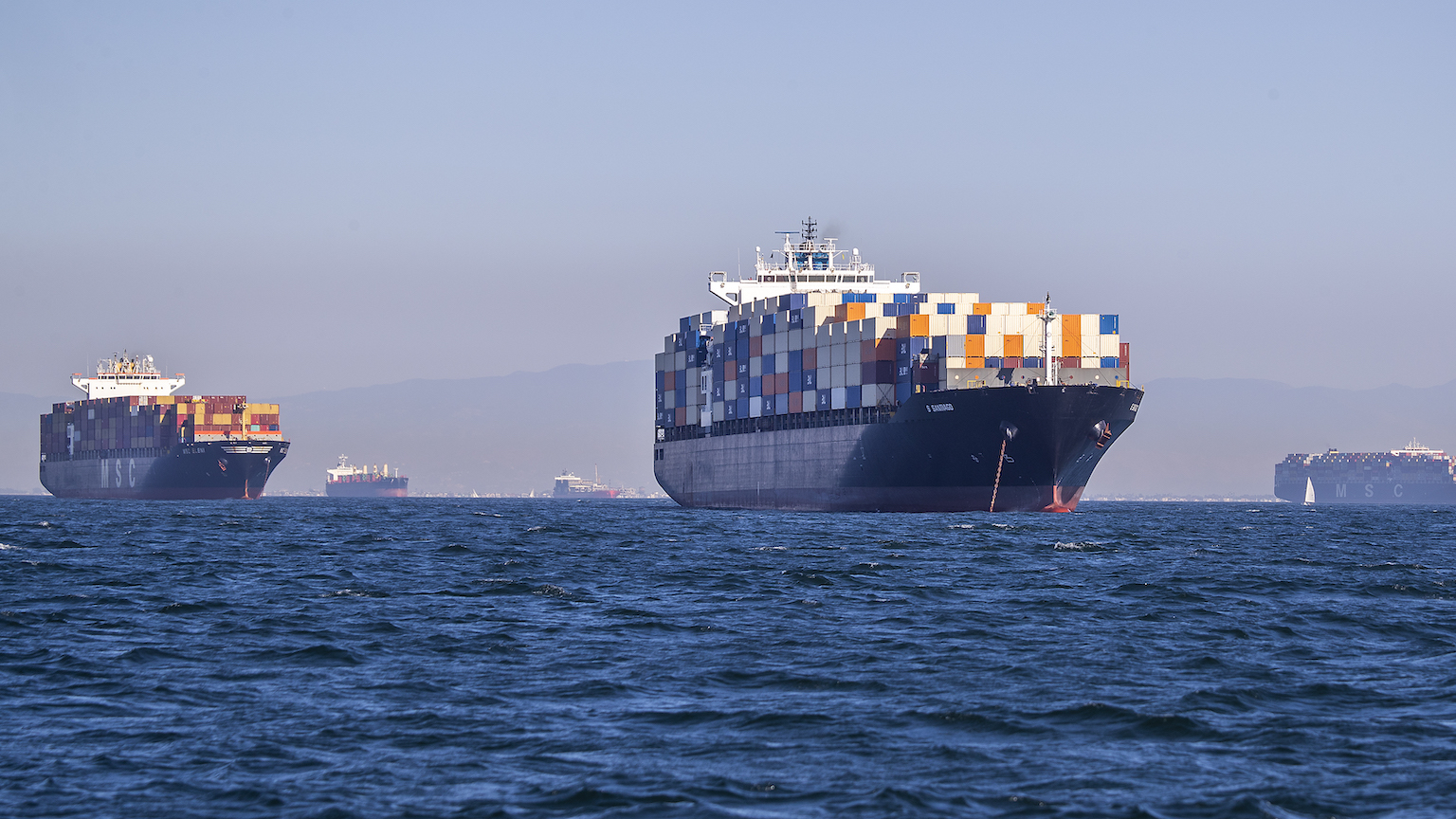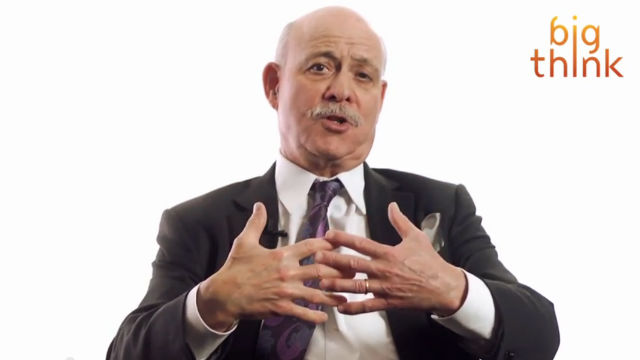How to solve the supply chain backlog clogging up our ports

- Problems have plagued the logistics and transportation industry for quite some time.
- The COVID pandemic and subsequent surge in demand has exacerbated these problems.
- Flexport CEO Ryan Petersen has some creative solutions.
This article was originally published on our sister site, Freethink.
Empty store shelves, out of stock Amazon orders, rising prices — we’ve all experienced these direct effects of the global supply chain crisis in recent months.
However, shortages and rising prices are usually just a symptom of a larger problem that’s been plaguing the industry for much longer. In this case, the pandemic shutdowns threw the entire chain into chaos, as some ports reduced their operations or shut down completely in an effort to reduce virus transmission.
“The world economy is out of sync because parts of it were forced to go offline when the pandemic started and getting all the industry players back in line at the same time is near impossible,” former US trade negotiator Harry Broadman told Business Insider.
On top of that, as virus restrictions lift around the world, consumer demand has skyrocketed — leaving the supply chain struggling to keep up.
“The world economy is out of sync because parts of it were forced to go offline when the pandemic started and getting all the industry players back in line at the same time is near impossible,”
HARRY BROADMAN, FORMER US TRADE NEGOTIATOR
“All parts of the supply chain, most of which are built on ‘lean’ principles (no slack, little redundancy, from truck drivers to inventory in warehouses), were not prepared for this increase,” said Tony Pelli, Practice Director of Security & Resilience at BSI.
“While consumer demand can increase in a matter of months, it takes more time to increase port capacity, build warehouses, hire employees, etc., to meet that demand.”
All the while, shipping costs are soaring because there’s not enough ships or containers to meet the increased demand.
Last week, Moody’s Analytics released a report that said that things will “get worse before they get better,” as we continue to see a myriad of disruptions along the entire chain. Solving this crisis before the global economy spins out of control is going to take many different and innovative approaches.
Ryan Petersen, CEO of Flexport, has one creative approach that may solve one of the biggest bottlenecks in the chain: yard space at the container terminals.
Early on October 22, Petersen tweeted extensively about what he saw on a 3-hour boat tour of the Long Beach port complex — and how he thinks we can unclog the traffic jam.
Below is what Petersen saw about what is really going on at our ports, lightly edited. You can read the original thread here.
______________
Ryan Petersen:
The ports of LA/Long Beach are at a standstill. In a full 3 hour loop through the port complex, passing every single terminal, we saw less than a dozen containers get unloaded.
There are hundreds of cranes. I counted only about 7 that were even operating and those that were seemed to be going pretty slow. It seems that everyone now agrees that the bottleneck is yard space at the container terminals. The terminals are simply overflowing with containers, which means they no longer have space to take in new containers either from ships or land.
It’s a true traffic jam.
Right now, if you have a chassis (a special trailer used to transport containers) with no empty container on it, you can go pick up containers at any port terminal. However, if you have an empty container on that chassis, they’re not allowing you to return it except on a highly restricted basis.
If you can’t get the empty container off the chassis, you don’t have a chassis to go pick up the next container. And if nobody goes to pick up the next container, the port remains jammed.
RYAN PETERSEN
If you can’t get the empty container off the chassis, you don’t have a chassis to go pick up the next container. And if nobody goes to pick up the next container, the port remains jammed.
WIth the yards so full, carriers and terminals are being highly restrictive in where and when they will accept an empty container.
Also containers are not fungible between carriers, so the truckers have to drop their empty off at the right terminal. This is causing empty containers to pile up. This one trucking partner alone has 450 containers sitting on chassis right now (as of 10/21) at his yards.
This is a trucking company with 6 yards that represents 153 owner operator drivers, so he has almost 3 containers sitting on chassis at his yard for every driver on the team.
And with all the containers piling up in the terminal yard, the longshoremen can’t unload the ships. And so the queue grows longer
RYAN PETERSEN
He can’t take the containers off the chassis because he’s not allowed by the city of Long Beach zoning code to store empty containers more than 2 high in his truck yard. If he violates this code, they’ll shut down his yard.
With the chassis all tied up storing empty containers that can’t be returned to the port, there are no chassis available to pick up containers at the port.
And with all the containers piling up in the terminal yard, the longshoremen can’t unload the ships. And so the queue grows longer, with now over 70 ships containing 500,000 containers are waiting offshore. This line is going to get longer, not shorter.
This is a negative feedback loop that is rapidly cycling out of control — if it continues unabated, it will destroy the global economy.
This is a negative feedback loop that is rapidly cycling out of control — if it continues unabated, it will destroy the global economy.
RYAN PETERSEN
Alright how do we fix this, you ask? Simple. And we can do it fast now.
When you’re designing an operation you must choose your bottleneck. If the bottleneck appears somewhere that you didn’t choose, you aren’t running an operation. It’s running you.
You should always choose the most capital intensive part of the line to be your bottleneck. In a port that’s the ship to shore cranes. The cranes should never be unable to run because they’re waiting for another part of the operation to catch up.
You should always choose the most capital intensive part of the line to be your bottleneck. In a port that’s the ship to shore cranes. The bottleneck right now is not the cranes: It’s yard space.
RYAN PETERSEN
The bottleneck right now is not the cranes: It’s yard space at the container terminals and it’s empty chassis to clear those containers out.
In operations when a bottleneck appears somewhere that you didn’t design for it to appear, you must OVERWHELM THE BOTTLENECK!
Here’s a simple plan that President Bident, Governor Newsom and the private sector, labor, truckers, and everyone else in the chain must implement TODAY to overwhelm the bottleneck and create yard space at the ports.
1) Executive order, effective immediately, overriding the zoning rules in Long Beach and Los Angeles to allow truck yards to store up to six empty containers high instead of the current limit of two. Make it temporary for about 120 days. This will free up tens of thousands of chassis that right now are just storing containers on wheels. Those chassis can immediately be taken to the ports to haul away the containers. (Editor’s note: since Petersen proposed his plan, Long Beach Mayor Robert Garcia has enacted a temporary measure increasing this limit to 4 containers).
This is not a comprehensive list. Please add to it. We don’t need to do the best ideas. We need to do ALL the ideas.
RYAN PETERSEN
2) Bring every container chassis owned by the national guard and the military anywhere in the US to the ports and loan them to the terminals for 180 days.
3) Create a new temporary container yard on a large (about 500+ acres) piece of government land that’s adjacent to an inland rail head within 100 miles of the port complex.
4) Force the railroads to haul all containers to this new site, turn around and come back. There should be no more 1500 mile train journeys to Dallas. We’re doing 100 mile shuttles, turning around and doing it again. Truckers will go to this site to get containers instead of the port.
5) Bring in barges and small container ships and start hauling containers out of Long Beach to other smaller ports that aren’t backed up.
This is not a comprehensive list. Please add to it. We don’t need to do the best ideas. We need to do ALL the ideas.
We must OVERWHELM THE BOTTLENECK and get these ports working again. I can’t stress enough how bad it is for the world economy if the ports don’t work. Every company selling physical goods bought or sold internationally will fail.
The circulatory system our globalized economy depends on has collapsed. And thanks to the negative feedback loops involved, it’s getting worse not better every day that goes by.
I’d be happy to lead this effort for the federal or state government if asked. Leadership is the missing ingredient at this point.





